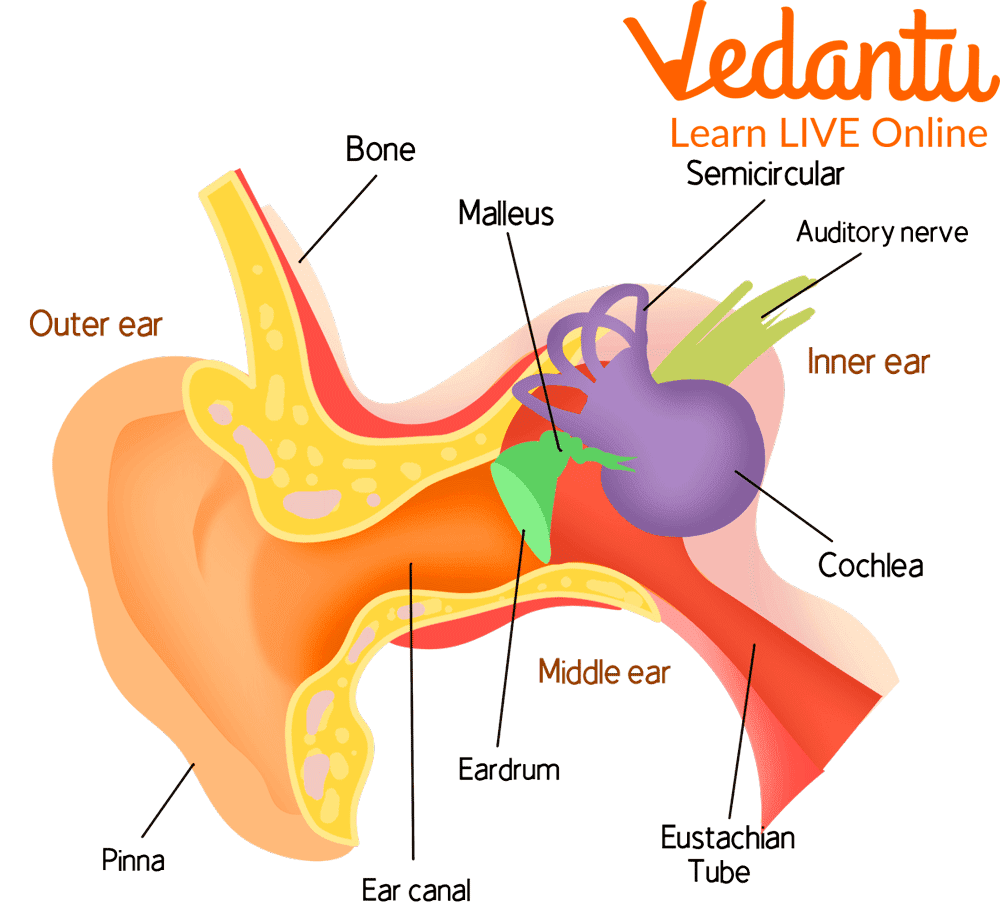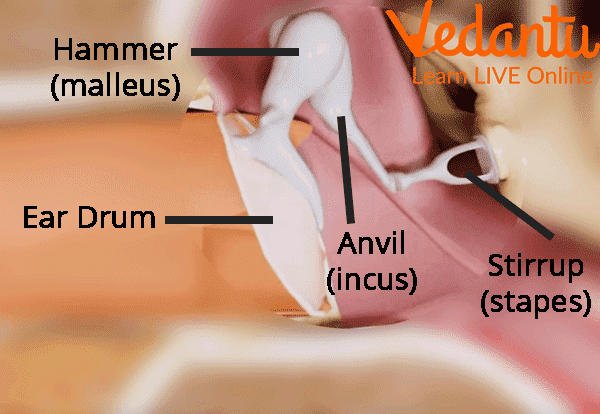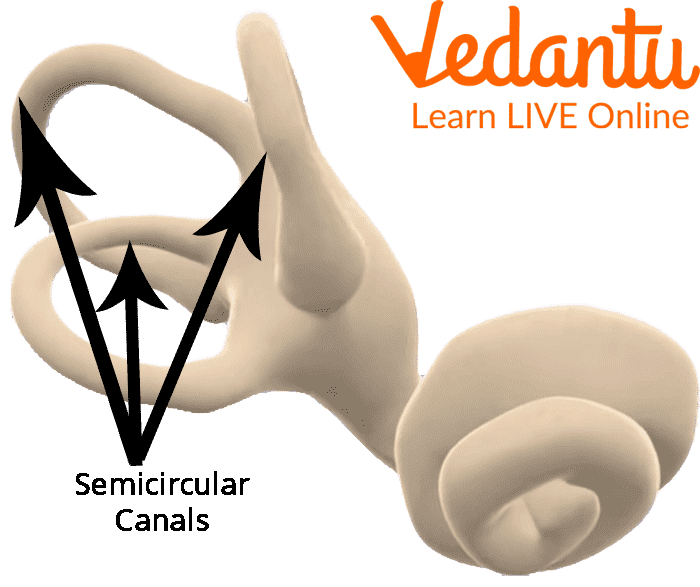Understanding the Vestibular System: The Science Behind Balance
Have you ever noticed what happens when you spin around for a minute? You cannot stand firmly, right? Why does spinning make us feel dizzy? All of the above happens because of our ears and the fluid-filled inside them. Ear is our sense organ that helps us in hearing. There are different parts of the ear like the outer ear, middle ear, and inner ear. It is because of the fluid and related ear mechanism we can stand firm. This fluid is endolymph which is filled in semicircular canals. As a result, our ear plays a significant role in balancing our bodies and keeps us static. But, the question is how?
So, in this article, you will learn all about balance in the ear and how the ear balances the body.

Child Feeling Dizzy after Spinning
What is Ear?
The ear is the organ that creates our sense of hearing and balance. Also called the sense organ of hearing. This organ is in charge of capturing sounds around us and sending signals to the brain so we can react accordingly.
For example, imagine hearing the siren of an ambulance. Your ear collects the vibrations from the siren and signals your brain for you to move out of the way of the ambulance.
What is Ear Balance?
The balance, which is maintained and regulated by the help of our ears and their related structures, is called the balance in the ear. The part of the inner ear is responsible for this. Medication, ear infections, and head injuries can cause ear balance problems.
Structure or Anatomy of the Ear
The ear is divided into three parts: the outer ear, the middle ear, and the inner ear.

Three Divisions of the Ear
The Outer Ear
The outer ear is made up of two parts: The Oracle and the Auditory canal.
The Oracle or the ear lobe/pinna - It is the part of the ear that captures sound waves. The auditory canal is the part of the ear through which sound travels to reach the middle ear. The outer ear also has some hair and wax-producing glands that help the ear to be clean and guard it against harmful bacterial attacks.
The Middle Ear
The middle ear comprises the eardrum and three small bones: the hammer, the incus, and the stapes. They transmit sound to the cochlea. A tube (named Eustachian tube) is also located in the middle ear. This tube connects the middle ear to the throat. The primary function of this is to equalise the pressure within the ears so that the eardrum can correctly translate sound vibrations to the auditory nerves.
The eardrum is a membrane similar to a drum head located between the outer and inner ear. When sounds reach in tympanic tissue, it vibrates and causes the tiny bones to move. Next, the tiny bone called the hammer, incus, and stapes start moving and raise the vibration transmitted by the ear drum, then the bones send the amplified signal to the cochlea.

Tiny Ear Bones/Ossicles
The Inner Ear
The cochlea is located in the inner ear and is a structure of elastic which is usually coiled and looks like a snail shell. This part of the ear is in charge of converting the vibration received by the middle year into a nerve signal to send it to the brain through auditory nerves.
Along with the cochlea are connected the semicircular canals, which are usually three tiny tubes that are interconnected, and their job is to help to maintain the body's balance. The semicircular Canals are filled with fluid that is the essential liquid in the ear for balance.
The Main Balancing Portion: The Semicircular Canals
The semicircular canals are filled with fluid, and their walls are lined with tiny hair. When we move our heads, the fluid in the canal moves around and reaches the hair. The hair sends our position information as a signal through nerves to our Brain. The brain interprets those signals and messages towards the muscle and helps us stay balanced.

Semicircular Canals
The movement of the fluid of the semicircular canal is the sole reason behind the dizziness we feel after spinning around. When we spin around and stop, we feel dizzy because the fluid in our semicircular canal also sloshes around, again and again, giving our brain the idea that we are still spinning when we have stopped; when the fluid stops moving, the dizziness goes away.
Fluid in Ear Balance
The fluid in ear balance that helps us maintain our balance is called endolymph, which is usually filled in the ear's semicircular canals. Another liquid in the ear for balance is the perilymph. The whole semicircular canal is filled with endolymph and floats in the perilymph. Both these fluids work together and maintain our body balance.
Summary
The ear is the sense organ that aids in hearing. The ear is also helping in maintaining balance which is known as ear balance. Ear balance is an essential mechanism for humans to stand still and maintain balance, which is regulated by the fluid filled inside the semicircular canals known as endolymph. If there is fluid imbalance because of injury or infection, ear balance gets disturbed. Dizziness occurs because of this fluid if disturbed.
In this article, we discussed the anatomy of the ear and its parts outer ear, middle ear, and inner ear and their respective parts and functions. We hope we were able to clarify all the concepts and queries regarding balance in the ear.


FAQs on How Does the Ear Maintain Body Balance?
1. How exactly does the ear help maintain body balance?
The ear maintains body balance through the vestibular system, located in the inner ear. This system detects changes in head position and movement. When you move your head, the fluid (endolymph) inside the semicircular canals and otolith organs (utricle and saccule) also moves. This movement stimulates tiny hair cells that send nerve impulses via the vestibular nerve to the cerebellum in the brain. The brain then processes these signals to understand the body's orientation and sends commands to muscles to maintain posture and balance.
2. Which specific parts of the inner ear are responsible for maintaining balance?
The parts of the inner ear responsible for balance form the vestibular apparatus. This system consists of two main components:
- The semicircular canals: Three fluid-filled tubes that detect rotational or angular movements of the head, such as nodding 'yes' or shaking 'no'.
- The otolith organs: These include the utricle and the saccule, which detect linear acceleration (moving forward/backward) and the effects of gravity (head tilt).
3. What is the difference between static and dynamic equilibrium, and how does the ear manage both?
The ear manages two distinct types of equilibrium, which are essential for overall balance:
- Static Equilibrium: This is the perception of the head's orientation relative to gravity when the body is stationary. It is primarily managed by the otolith organs (utricle and saccule), which contain tiny calcium carbonate crystals (otoliths) that shift with gravity, signalling head position.
- Dynamic Equilibrium: This is the perception of motion or acceleration, particularly rotational movements. This is the main function of the three semicircular canals, where fluid movement detects changes in the speed and direction of head rotation.
4. How do the ears, eyes, and cerebellum coordinate to create our sense of balance?
Our sense of balance is a complex integration of information from three main sources. The vestibular system in the ears reports on head motion and orientation. Our eyes (vision) provide information about where our body is in space relative to our surroundings. Lastly, proprioceptors in our muscles and joints provide feedback on body position. All this sensory data is relayed to the cerebellum in the brain, which acts as the control centre. The cerebellum processes these inputs and sends coordinated signals to the skeletal muscles to make precise adjustments, ensuring we remain upright and stable.
5. Why might a person feel dizzy after spinning around, based on the ear's mechanism?
When you spin, the endolymph fluid inside your semicircular canals starts moving at the same speed as your head. When you suddenly stop spinning, your head stops, but due to inertia, the endolymph continues to move for a short period. This continued fluid movement keeps stimulating the sensory hair cells, sending signals to the brain that you are still rotating. This conflict between what your ears are sensing (motion) and what your eyes and body are sensing (being stationary) results in the sensation of dizziness or vertigo.
6. If the auditory (hearing) and vestibular (balance) systems are both in the ear, why doesn't hearing loss always cause balance problems?
Hearing and balance are two distinct functions performed by different, though adjacent, structures within the inner ear. The cochlea is the organ responsible for converting sound vibrations into nerve signals for hearing. The vestibular apparatus (semicircular canals and otolith organs) is responsible for balance. It is entirely possible for damage or a condition to affect only the cochlea, leading to hearing loss without impacting the vestibular system. Therefore, a person's balance will remain normal as long as their vestibular apparatus and the associated neural pathways to the brain are functioning correctly.
7. What are the roles of the two main fluids, endolymph and perilymph, in the inner ear's balancing function?
The inner ear contains two crucial fluids for its balance and hearing functions. The endolymph is located within the membranous labyrinth, which includes the semicircular canals and otolith organs. Its movement is what directly stimulates the sensory hair cells responsible for detecting head motion. In contrast, the perilymph surrounds the membranous labyrinth within the bony labyrinth, acting as a protective cushion and providing a stable ionic environment. While endolymph is the primary fluid for signalling movement, perilymph plays a vital supportive and protective role.










